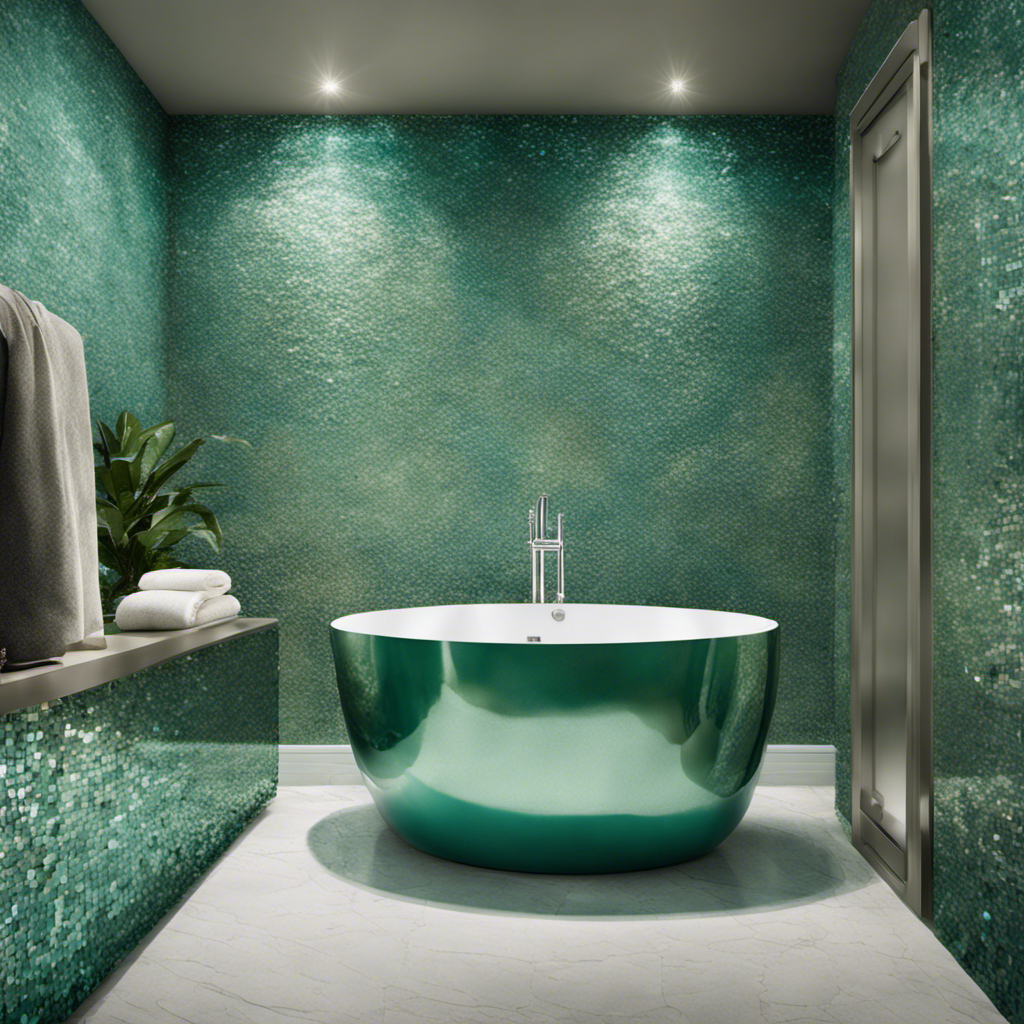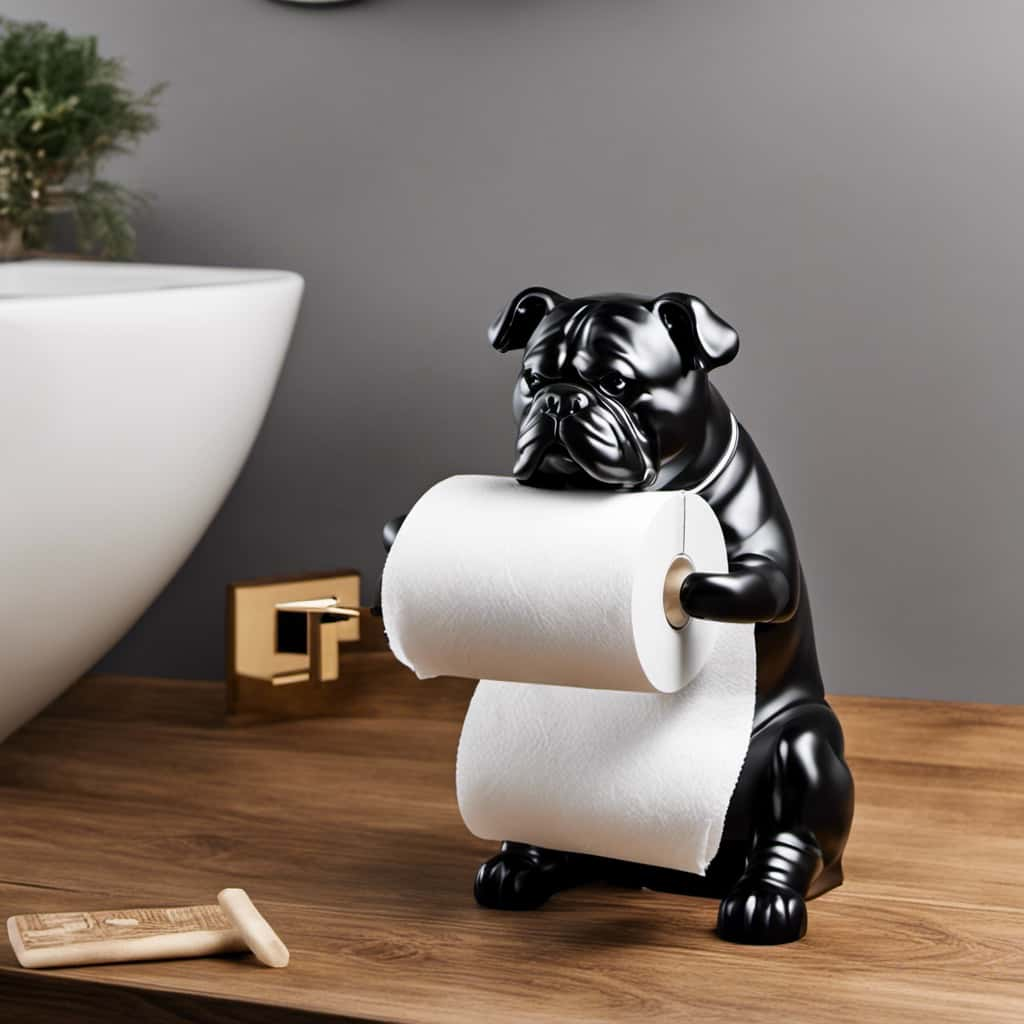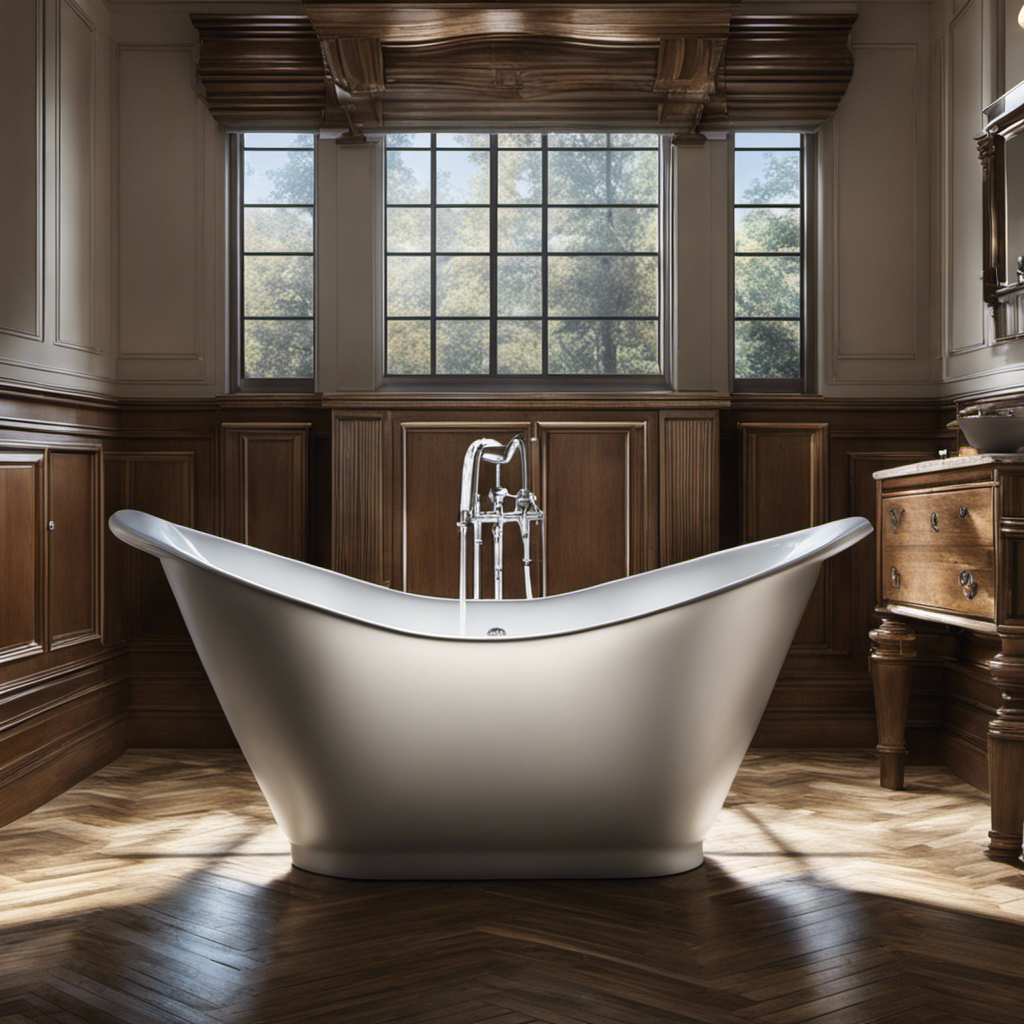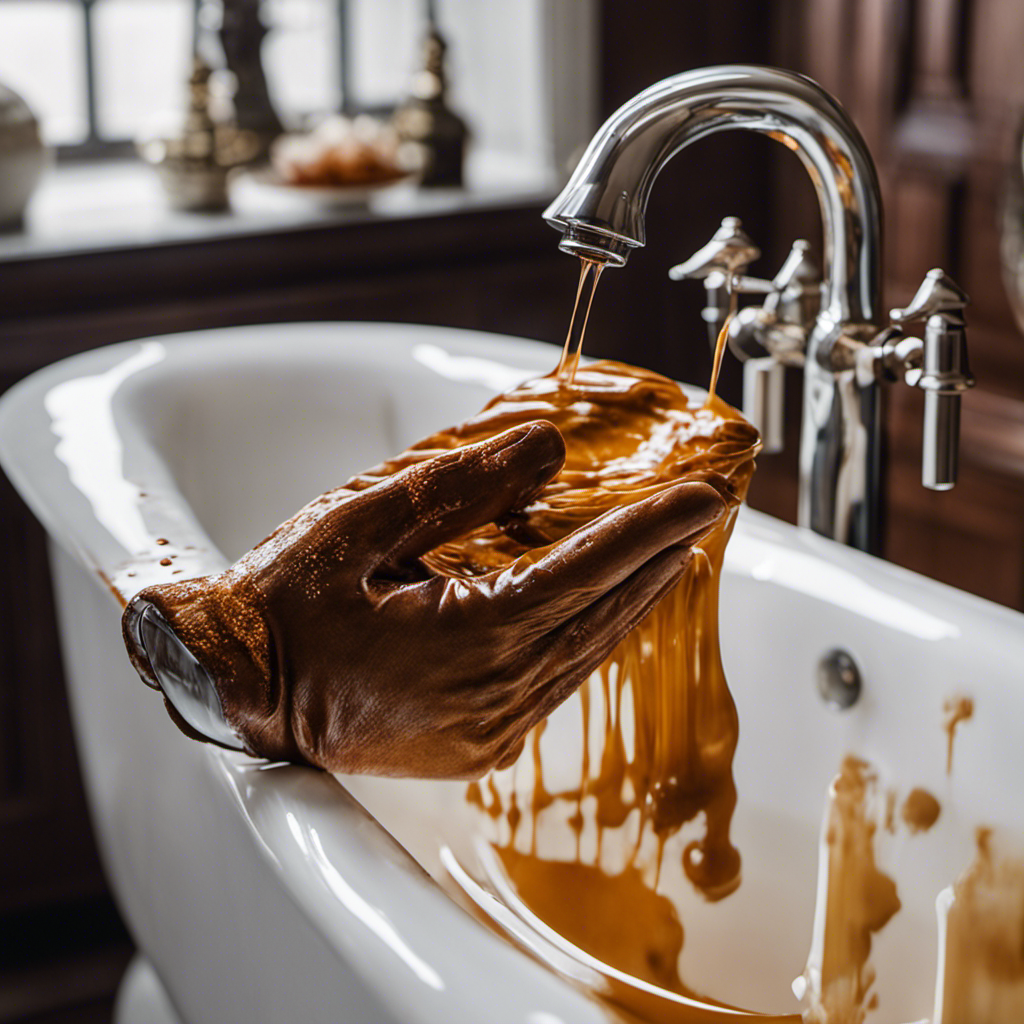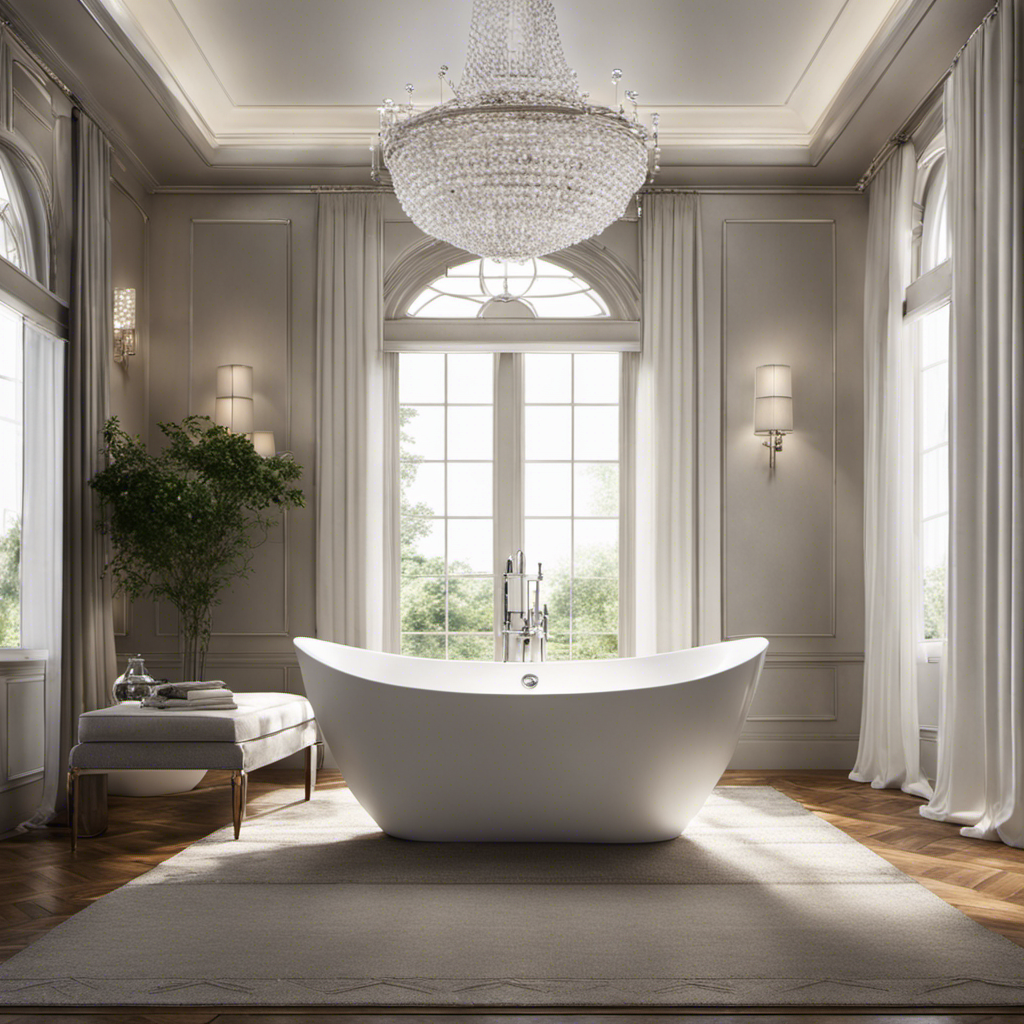When I step into my bathtub, I am always amazed at how sturdy and comfortable it feels.
But have you ever wondered what material your bathtub is made of?
In this article, I will explore the different types of bathtub materials, such as acrylic, cast iron, fiberglass, and porcelain-enameled steel.
By understanding the pros and cons of each material, you can make an informed decision about which bathtub is right for you.
So, let’s dive in and discover what material is my bathtub made of!
Key Takeaways
- When comparing bathtub materials, factors such as initial cost, maintenance, and durability should be considered.
- Porcelain and cast iron bathtubs have a higher upfront cost but are known for their longevity and durability.
- Acrylic and fiberglass bathtubs are more affordable upfront but may require more maintenance and may not last as long.
- Acrylic, fiberglass, and porcelain-enameled steel bathtubs have a smaller carbon footprint compared to cast iron.
Different Types of Bathtub Materials
There’s a wide range of bathtub materials available on the market. When it comes to comparing the cost effectiveness of different bathtub materials, it’s important to consider factors such as initial cost, maintenance, and durability.
While materials like porcelain and cast iron may have a higher upfront cost, they are known for their longevity and durability, making them cost-effective in the long run. On the other hand, materials like acrylic and fiberglass are more affordable upfront, but may require more maintenance and may not last as long.
When examining the environmental impact of various bathtub materials, materials like acrylic and fiberglass tend to have a smaller carbon footprint compared to materials like porcelain and cast iron.
Transitioning into the next section, let’s dive into the pros and cons of acrylic bathtubs.
Pros and Cons of Acrylic Bathtubs
When considering the pros and cons of acrylic bathtubs, you should evaluate their durability and ease of maintenance.
Acrylic bathtubs are known for their strength and longevity. They are resistant to cracking and chipping, making them a durable choice for any bathroom.
In terms of maintenance, acrylic bathtubs are relatively easy to clean. They have a non-porous surface that prevents dirt and grime from seeping into the material. Regular cleaning with mild soap and water is usually sufficient to keep them looking new.
When installing an acrylic bathtub, it is important to follow a few tips. Firstly, ensure that the floor is level and sturdy enough to support the weight of the tub. Secondly, use proper caulking to seal any gaps between the tub and the wall. Lastly, avoid using abrasive cleaners or tools that could damage the acrylic surface.
Exploring the Durability of Cast Iron Bathtubs
Cast iron bathtubs are known for their durability and long lifespan. These tubs are made with a thick layer of porcelain enamel, which helps protect the cast iron underneath.
Here are some key points about the durability of porcelain enameled bathtubs and the maintenance of cast iron bathtubs:
- Porcelain enamel is a strong and durable material that can withstand daily use and resist chipping or scratching.
- The thick layer of enamel also helps to retain heat, providing a luxurious bathing experience.
- Cast iron is a sturdy material that can handle heavy loads without flexing or cracking.
- Regular cleaning and maintenance, such as avoiding abrasive cleaners and using non-slip mats to prevent scratches, can help prolong the lifespan of a cast iron bathtub.
Understanding the benefits of fiberglass bathtubs, on the other hand, offers a lightweight and affordable option for those seeking a different type of bathtub.
Understanding the Benefits of Fiberglass Bathtubs
Fiberglass bathtubs are a popular choice due to their lightweight construction and affordability. When comparing fiberglass and porcelain bathtubs, it’s important to consider factors such as durability, maintenance, and cost. While porcelain bathtubs may be more durable and have a longer lifespan, fiberglass bathtubs are a practical and cost-effective option for many homeowners.
To help you make an informed decision, here’s a comparison between fiberglass and porcelain bathtubs:
| Factors | Fiberglass Bathtubs | Porcelain Bathtubs |
|---|---|---|
| Durability | Less durable | More durable |
| Maintenance | Easy to clean | More maintenance |
| Cost | Affordable | Expensive |
In terms of maintenance, fiberglass bathtubs are relatively easy to clean. Regular cleaning with non-abrasive cleaners is usually sufficient to keep them looking pristine. Avoid using harsh chemicals or abrasive materials that can damage the surface. Additionally, it’s important to avoid placing heavy objects on the edges of the bathtub to prevent cracking or damage.
Is a Porcelain-Enameled Steel Bathtub Right for You?
If you’re looking for a durable and budget-friendly option, a porcelain-enameled steel bathtub might be the right choice for you. This type of bathtub is made of a steel base that is coated with a layer of porcelain enamel, giving it a smooth and glossy finish.
Here are some key points to consider when comparing bathtub materials:
-
Durability: Porcelain-enameled steel bathtubs are known for their strength and resilience. They are resistant to chipping, scratching, and fading, making them a long-lasting choice.
-
Maintenance: These bathtubs are easy to clean and maintain. The porcelain enamel coating is non-porous, preventing the buildup of dirt, grime, and bacteria. Regular cleaning with non-abrasive cleaners is all that’s needed to keep it looking new.
-
Affordability: Porcelain-enameled steel bathtubs are more affordable compared to other materials like cast iron or acrylic. They offer a cost-effective option without compromising on quality.
-
Heat retention: The steel base of these bathtubs helps in retaining heat, allowing for a longer and more relaxing bath experience.
Overall, a porcelain-enameled steel bathtub provides a durable, easy to maintain, and budget-friendly option for your bathroom.
Frequently Asked Questions
How Do I Clean and Maintain a Bathtub Made of Acrylic?
To clean and maintain an acrylic bathtub, it’s important to use gentle cleaning methods and products specifically designed for acrylic surfaces. Avoid abrasive cleaners and scrub with a non-abrasive sponge or cloth for best results.
Can I Refinish or Repair a Cast Iron Bathtub if It Gets Damaged?
Can I refinish or repair a cast iron bathtub if it gets damaged? Oh, absolutely! Cast iron bathtubs are incredibly durable and can be easily refinished or repaired to restore their beauty and functionality.
Are Fiberglass Bathtubs Suitable for Hot Water and Constant Use?
Fiberglass bathtubs are durable and can withstand constant use, including hot water. They have a long lifespan and are suitable for regular use.
What Are the Common Drawbacks of Porcelain-Enameled Steel Bathtubs?
Porcelain-enameled steel bathtubs offer a balance of durability and cost effectiveness. However, they do have some drawbacks. These include susceptibility to chipping and scratching, as well as a tendency to retain heat longer.
Do Any of These Bathtub Materials Come With a Warranty?
Yes, some bathtub materials come with a warranty. It’s important to consider the durability of different materials when choosing a bathtub. A warranty can provide peace of mind and protection against any potential issues.
Conclusion
In conclusion, understanding the material of your bathtub is essential for making informed decisions about maintenance and durability.
Each type of material has its own advantages and drawbacks. For example, if you have a busy household with young children, a durable cast iron bathtub may be the best choice.
On the other hand, if you prefer a lightweight and affordable option, a fiberglass bathtub would be a great fit.
Ultimately, knowing the material of your bathtub allows you to select the best option that suits your needs and lifestyle.
